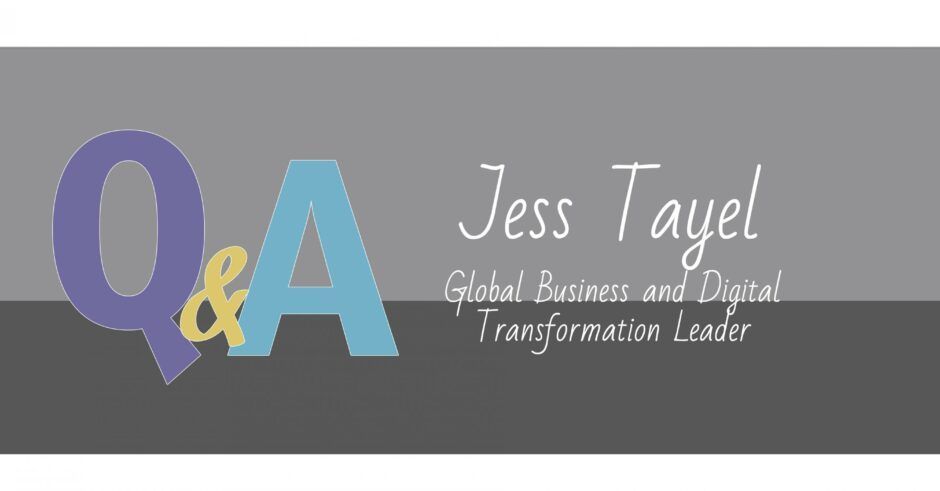We conducted a Q&A interview with Jess Tayel, Global Business and Digital Transformation Coach and Mentor, about business transformation, where it should sit within an organisation and the importance of value-add business transformation to an organisation.
Could you introduce yourself and what you do?
Jess Tayel, 20 years of experience in business design, business transformation, and people change management. I am very passionate about creating change and delivering value to people and organizations. Am also passionate about empowering people through having a voice and bringing out their authentic power in their workplaces and careers. I have worked in 11 countries over five different continents across various industries such as Aviation, Manufacturing, Technology, Consulting, Infrastructure, Retail, Government, Insurance, Banking, Oil & Gas, Education and Telecom. I have worked for organizations of various scales and structures. I had the pleasure of working with Amey UK, Barclays, ABN Amro Netherlands, HP, Boeing, Microsoft, Accenture, IBM, Qatar Airways, Woolworths, David Jones, Vodafone, Legal & General UK, Schlumberger, and others.
I am humbled by the opportunities I had to help individuals and organizations perform better. It is such an enriching and a rewarding experience. If I were to articulate a bit more about my areas of expertise, I would say that I serve professionals and organizations in designing and delivering successful business transformation programs, design and deliver technology solutions that are adopted, design target operating models, business process reengineering, organizational design, customer experience design and customer success management. I also help individuals and organizations in setting up and building Program Management Offices (PMO), build and sustain continuous improvement and project management capabilities, coach and mentor organizations and individuals to help them create impact and deliver value in their careers and workplaces. My mission is to help individuals and organizations create value, deliver successful transformations, and create the positive impact they are meant to convey with purpose and intention. Realizing that Business Transformation is playing the “Bigger Game” in ensuring that our customers are gaining value; We are creating a positive impact and making a difference in our workplaces.
Where should transformation sit within an organization?
Transformation is critical to the delivery of the organization’s business outcomes. As a result, it should sit at an executive level with the backing and support of the rest of the executive team and the CEO
It adds another layer of complexity to have the transformation function “fight for its life” when it is buried under many organizational layers or levels of bureaucracy. Consequently, making decisions and delivering an organizational-wide change becomes increasingly hard and slows down the whole process. What this does is that it gives the impression that the function is not needed because it is slow and not delivering. While in fact, it is because of the amount of communication and reporting lines that the transformation professionals must go through, that changes are slow, and the momentum is lost.
Deciding on the transformation function level in the organization is a critical decision that the CEO and the executive team needs to be very mindful of when embarking on a transformation journey.
Another angle to look at this from, is which department should house the transformation function? Report to which executive and to which area? This is another key question that needs to be well thought through. I cannot emphasize this enough. The reason being is that the transformation effort will be labelled with whatever function it reports into.
If the head of transformation reports to Technology, then it is labelled as “Technology Transformation”, if it reports to Finance, then it is labeled as “Finance Transformation.” Again, this adds another layer of complexity and an unnecessary communication effort
Eventually, and in most cases, the function that the transformation reports into will have its own projects make it to the top of the transformation initiatives list, and the rest of the organization will assume that this transformation has nothing to do with them. Unless this was the original intention of the transformation, which is to be function-based, then the decision to have it report to a specialized function may not be the best call
In other organizations, the decision of the transformation reporting line is based on the executive with the highest level of influence or the executive who has better knowledge or experience in transformation. These are good decision-making factors, but certainly, do not cover the whole list. It is essential to position transformation depending on what is the long-term plan and the portfolio diversity that this transformation will hold as well as looking at the depth and breadth that this transformation is accountable for.
Many organizations seem to be undergoing business transformations, but what does it mean to have a value-add business transformation?
Value add business transformation is a business transformation that delivers real business outcomes, a sustainable and adopted change within the agreed delivery parameters
The concept of delivering value through transformation is critical. A lot of the failed business transformation efforts are a result of the transformation being looked upon and treated like as a project. Once this is the case, we start thinking of solutions, architecture, governance, reporting packs, and hiring a team…etc.
Business Transformation is a journey that needs to start with:
- The right level of understanding of the existing landscape from all aspects (people, process, technology, data, strategy execution and customer experience)
- Decision on the design principles for which this transformation will be guided by
- Come up with value creation options that are co-created with those who are doing the work
- And then, transform this into a delivery focused program, while keeping an eye on business outcomes to ensure that the program is still delivering value
Another critical aspect of value creation through transformation, is the ability to create mechanisms or forums in the organizations that ensure that the outcome of transformation is sustained in the long run. This includes looking after the people, solution adoption, adherence to the new ways of working, continuous improvements efforts, as well as looking at other changes in the organization that might impact the current change and its effectiveness
What are the main building blocks of a value-add successful Business Transformation?
A holistic approach to a successful Business Transformation (BT) should address and work with the following building blocks
- People
- Process
- Technology
- Data
- Customer Experience
- Strategy Execution
With the following main five principles
- Co-Creation
- Focus on value
- Success is Adoption
- The solution should be customer-centric (through authentic engagement and service design)
- Sharpen the saw before cutting the tree, i.e., designing the business transformation is equally as important as the transformation delivery and sustainability
You may find a BT program that has pockets of expertise in some, or all of, the above building blocks, but bringing them all together is the critical skill.
Delivering a value-add Business Transformation (BT) holistically, covering these building blocks and abiding by those principles is more of an art than a science.
A holistic and integrated approach to BT is the hinge that will swing the door of real change to create sustainable success.
This Q&A has been split into 3 parts, so keep your eye out for Part 2 and Part 3.




